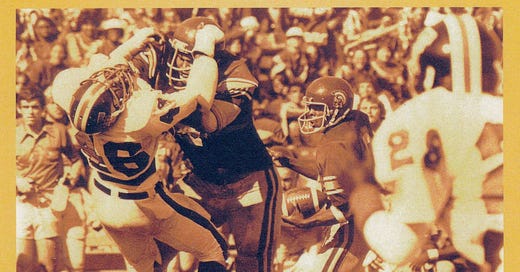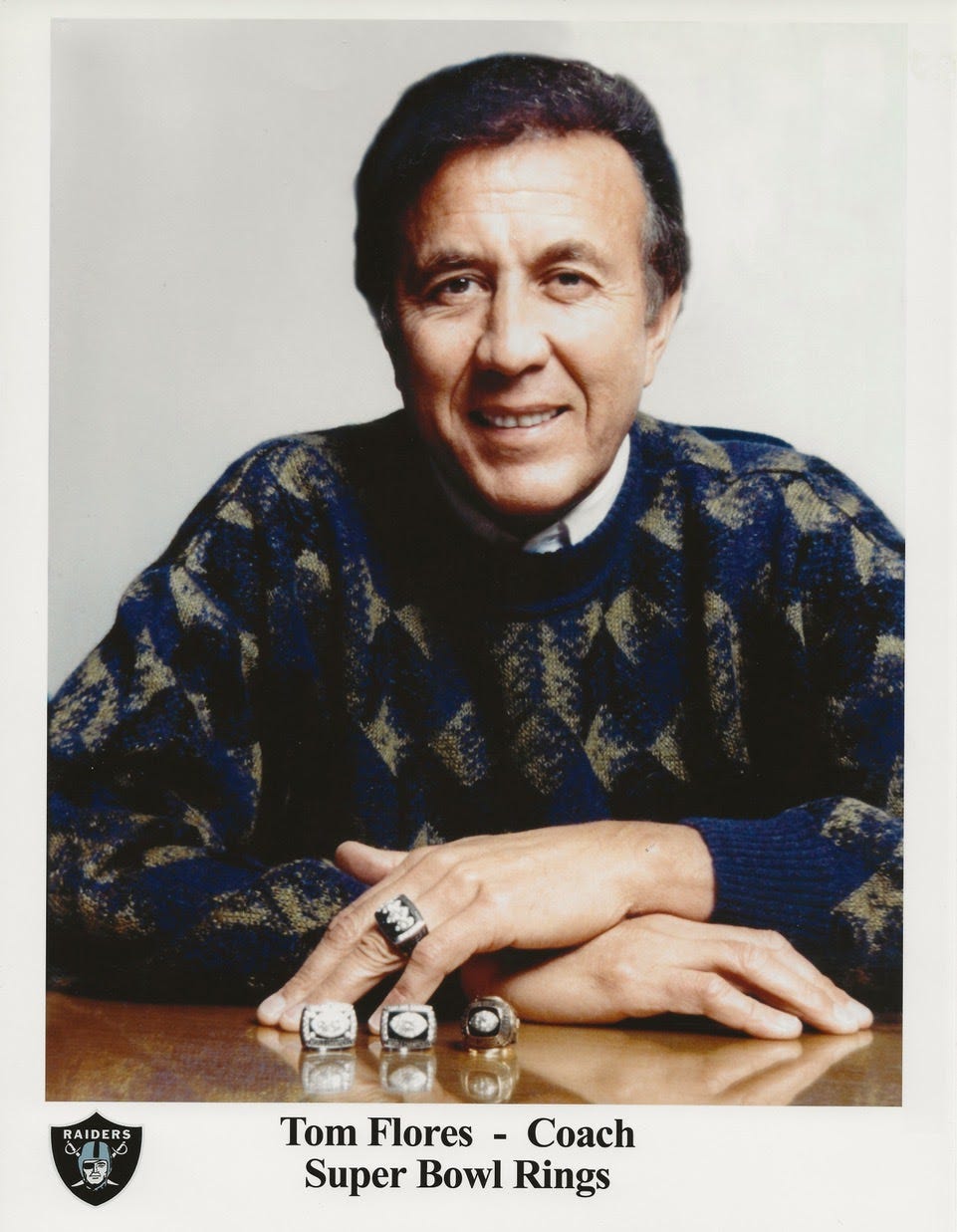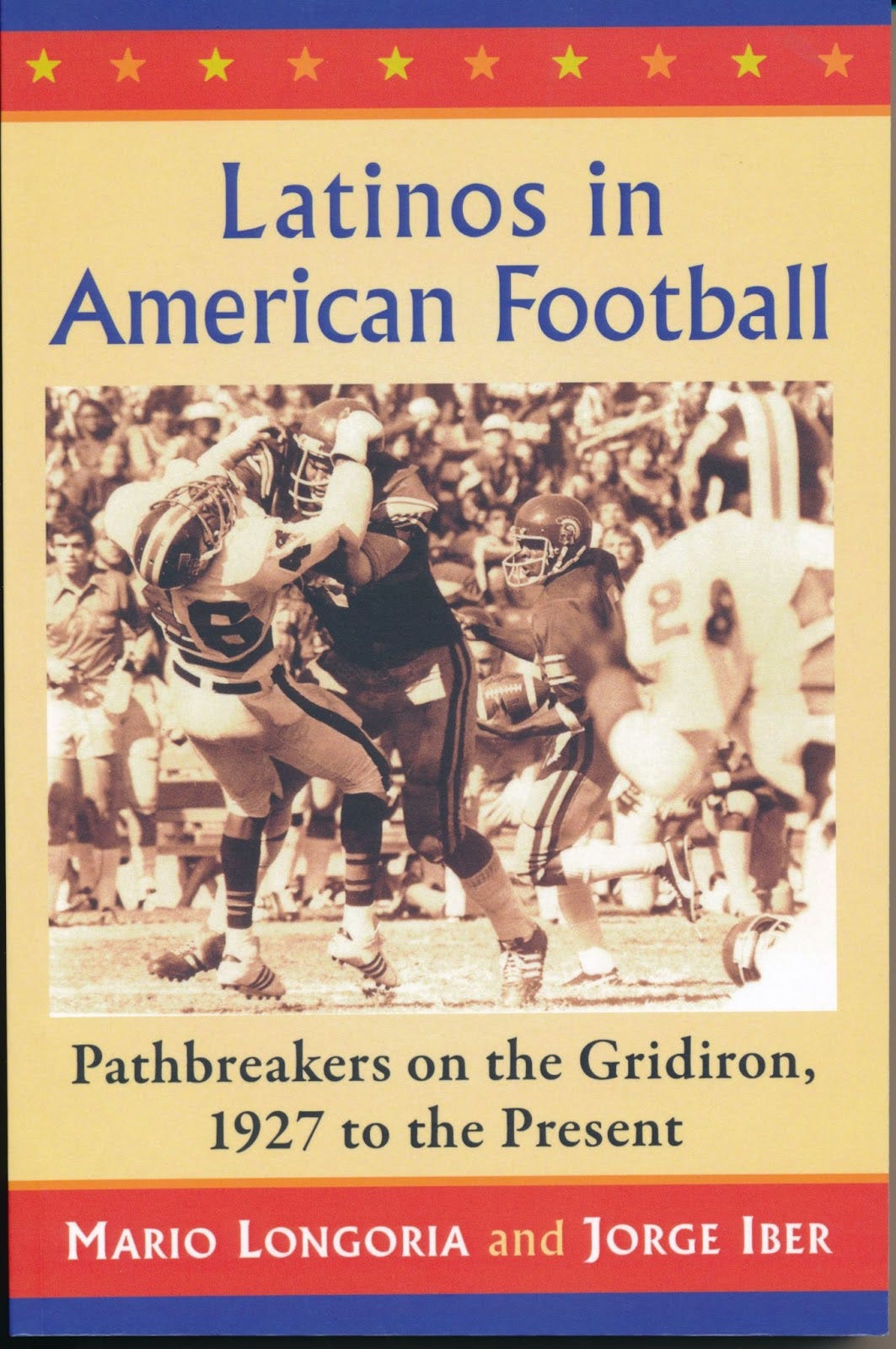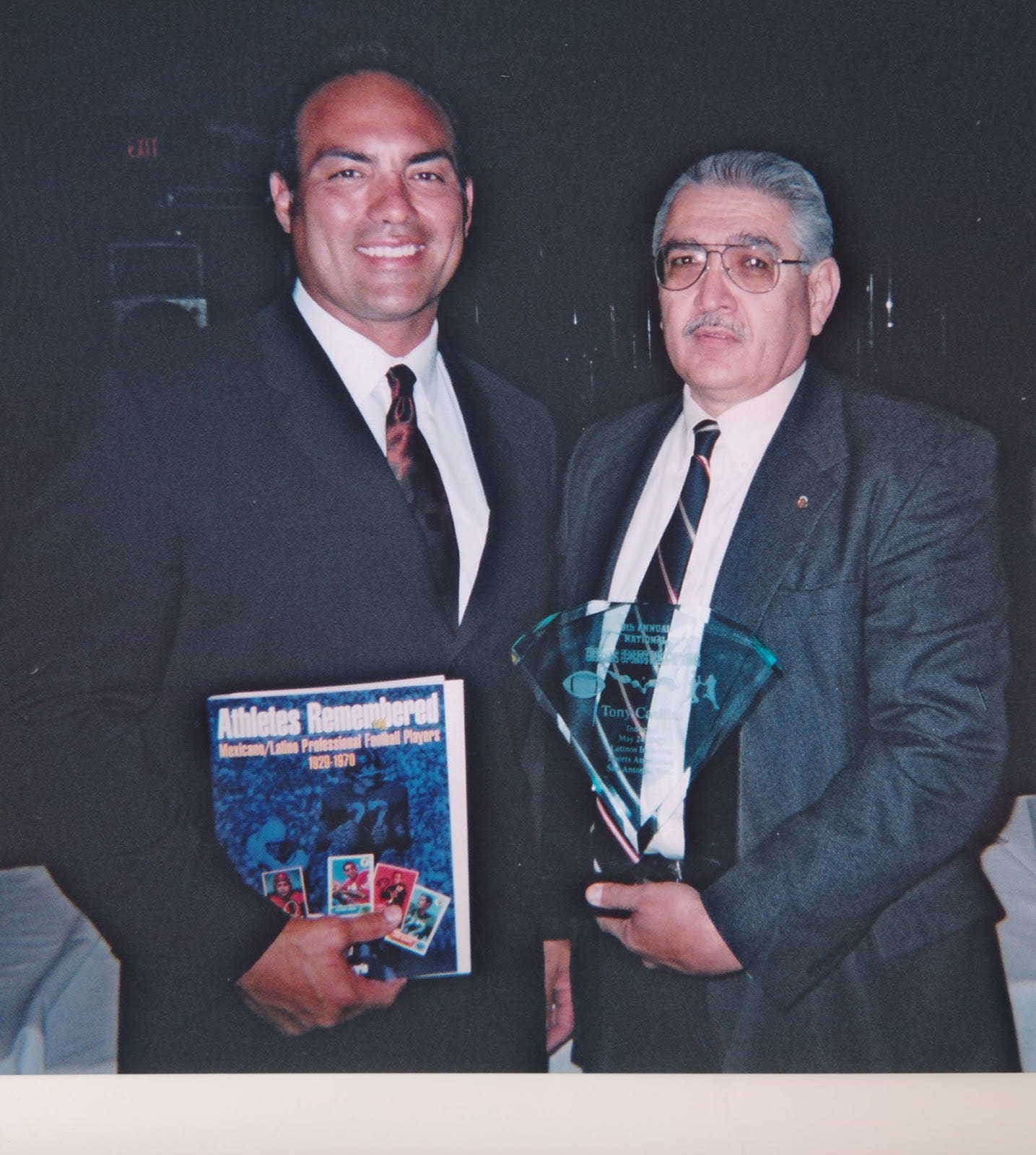Tony Romo serving as this year’s Super Bowl CBS broadcaster will provide a play-by-play analysis of the big game, a television first for a Latino. When the Los Angeles Rams meet the Cincinnati Bengals on their home field in Southern California, millions of Latino football fans are expected to attend and watch the east-west matchup. Tony Romo, a third-generation Mexican American, played for the Dallas Cowboys over the years 2003-2016. He was selected four times for the All-Pro Bowl and led the NFL ratings as a passer and in pass completions in 2014.
Southern Cal offensive tackle Anthony Munoz at the Los Angeles Memorial Coliseum, 1978. Munoz played in the XVI Super Bowl with the Cincinnati Bengals in 1982. Dr. Mario Longoria collection.
California’s five million Latinos may boost the viewing audience record to over 100 million and perhaps contribute to surpassing the 114 million viewers in 2015 when the New England Patriots defeated the Seattle Seahawks. A vast number of the 60 million Latinos in the nation follow sporting events. Citing Nielsen data, Rolling Stone reported: “94% of surveyed Latino men call themselves sports fans and 56 percent of those considered themselves dedicated fans.” In terms of sports preferences, Latinos listed basketball [MBA], baseball [MLB], and football [NFL] in that order.
During Tony Romo’s tenure as quarterback for the famed Dallas Cowboys, the team never reached the Super Bowl. Dr. Mario Longoria, one of the authors of Latinos in American Football, provided a list he compiled of all 49 Latinos who have played or coached in a Super Bowl game. The most famous Latino quarterbacks to play in the Super Bowl include Joe Kapp and Tom Flores [1970], George Mira [1972], and Jim Plunkett [1981]. Flores [1970] and Plunkett [1981] played on winning Super Bowl teams.
Mike Valdes-Fauli, a member of the Forbes Council, argues that sports can be a unifying force in our society. He claims that sports are “helping people from diverse backgrounds, ethnicities, genders, ages, and even political affiliations come together in shared spirit.” Professional soccer has done that for many countries around the world. Valdes-Fauli could have added that NFL football has been bringing people together from different nations for more than a generation. Mexico has the largest NFL fan base of any foreign country in the world with 28.3 million fans.
Mexican NFL fans began following American football during the late 1970s and early 1980s when kickers Danny Villanueva, Efren Herrera, and Rafael Septien played for the Dallas Cowboys. Two Latino Dallas Cowboys, kicker Efren Herrera [1978] and defensive lineman Tony Casillas [1993, 1994], both played on winning Super Bowl teams.
Tom Flores with his four Super Bowl rings [1970 as a quarterback with Kansas City Chiefs; 1977, Assistant coach with the Oakland Raiders; 1981, Head Coach with Oakland Raiders; and 1984, Head Coach with Los Angeles Raiders]. Dr. Mario Longoria collection.
The Dallas Cowboys became “America’s Team” when they became the first NFL team to broadcast their games to every region of the United States. Dating back to the 1980s Cowboys games were even broadcast in Mexico. The Cowboys are the favorite team in Mexico and Central America. However, Latino football fans on both sides of the border are more than warming up to the Los Angeles Rams, a team situated in America’s largest Latino community. Football fans in Mexico City will tune in to the Super Bowl game this year in large numbers because of their familiarity with Los Angeles and the L.A. Rams. According to Entravision Communications, Mexico City now has the 7th largest NFL fan base of any city in North America.
II. Dr. Mario Longoria’s Comments on his new book.
In our book, Latinos in American Football: Path Breakers on the Gridiron, 1927 to the Present, Jorge Iber and I explore the issues of citizenship, immigration, racism, and other areas of inequality that have historically confronted the Latino citizen/athlete, both the native-born and those who immigrated to the United States in search of better opportunities.
Cover of Latinos in American Football: Path Breakers on the Gridiron, 1927 to the Present. Ricardo Romo collection.
Professor Jorge Iber and I uncovered a lost history of Latino athletes competing in college and professional football dating back nearly 100 years. We found hundreds of stories of Latino athletes whose hard work, dedication, and perseverance helped them overcome substantial hardships and obstacles placed in their path to success in professional football.
We combined over 34 years of research in the book to learn and verify that Latinos took a keen interest in the sport of football as early as the 1910s, and Latino athletes persevered to compete in the sport at all levels.
Our book, Latinos in American Football, recovers a lost history based on substantive primary source information that disproves stereotypes and poorly formed assumptions about Latino athletes. We present a well-researched and documented history of the Latino’s experience and success in the sport of football at all levels of competition since the 1920s.
In the book’s Introduction and Chapter 0ne, we discuss a series of historical commentary that describes the negative perceptions people had toward Latinos and other people of color as they journeyed through American society. The information we gathered from records and archives clearly documented numerous views of minorities the greater society perceived as different from themselves. Overall, racially motivated studies from the past and today continue to refer to Latinos in a variety of negative terms and descriptions that should not be tolerated.
The story begins with a Cuban immigrant, Ignacio Saturnino Molinet, sent to finishing school in New Jersey; then to Ithaca, New York where he attended Cornell University. At Cornell, Molinet became an outstanding football player earning varsity letters and catching the attention of a scout from the Frankford Yellow Jackets of the old NFL in the summer of 1927.
Dr. Mario Longoria with former Dallas Cowboy defensive lineman Tony Casillas. Casillas played in Super Bowl XXVII and XXVIII. Dr. Mario Longoria collection.
After a series of negotiations, Molinet played fullback for a single season in professional football. The historical significance of Molinet’s participation is that he is the first Latino in professional football and one of several Latinos to enter the sport during the 1920s and play at the collegiate level.
Since then there have been hundreds of Latinos who competed in football at all levels. Our research identified over 393 Chicano/Latino/Hispanic/Spanish Surnamed (CLHSS) athletes participating in various professional football leagues since 1927; and we have recently gathered statistics of collegiate football athletes for the 2015 season that identify 261 Latino players and 12 coaches.
The number of Latino athletes playing collegiate football has decreased since 2015 to 205 players although the number of athletic directors and head and assistant coaches has increased to 15.
This Latino football history adds dimension and humanity to the current incomplete American football story. Our research fills the void in one of America’s favorite sports and acknowledges the participation and contributions of a very diverse group of Latino athletes who not only wanted the opportunity to learn and play the game but also demanded the opportunity to excel as athletes.







Rudy...great to hear from you and thanks for the acknowledgements...my best to you and your family...Mario
I had the privilege of working with Dr Mario Longoria and being on the same softball teams. I too have Dr Longoria’s Hispanic History book in my collection and proud of his work!